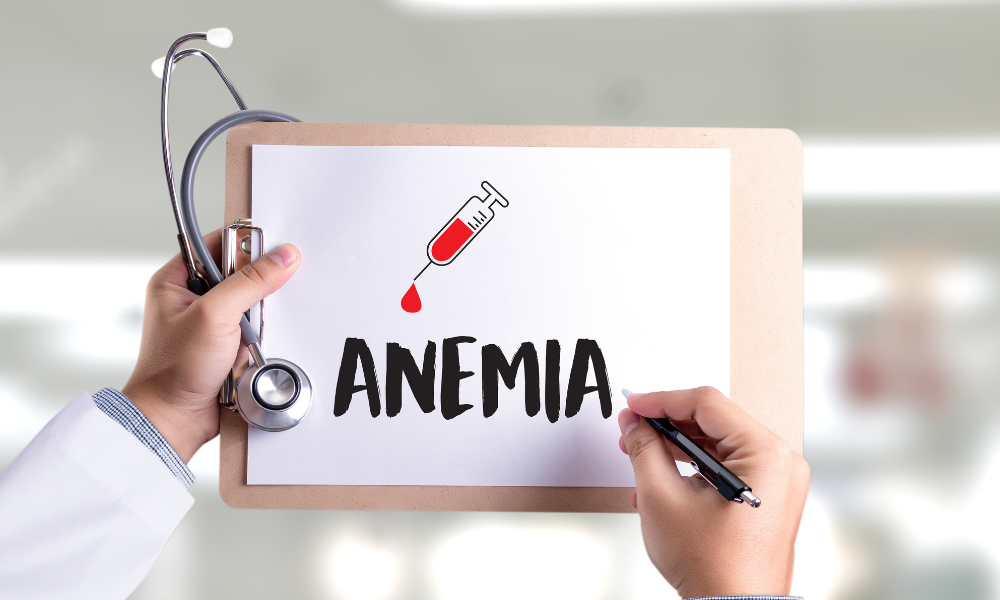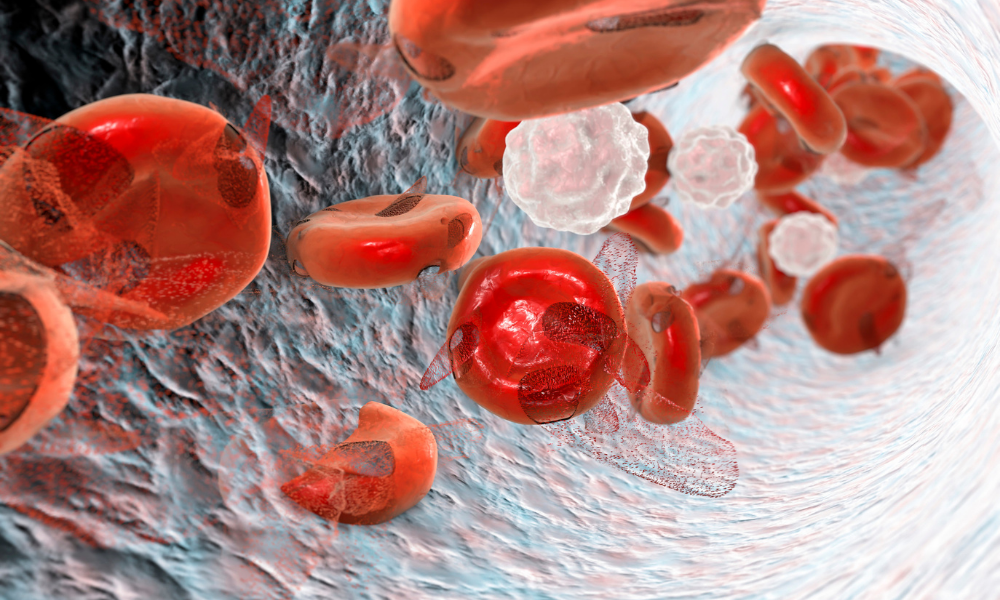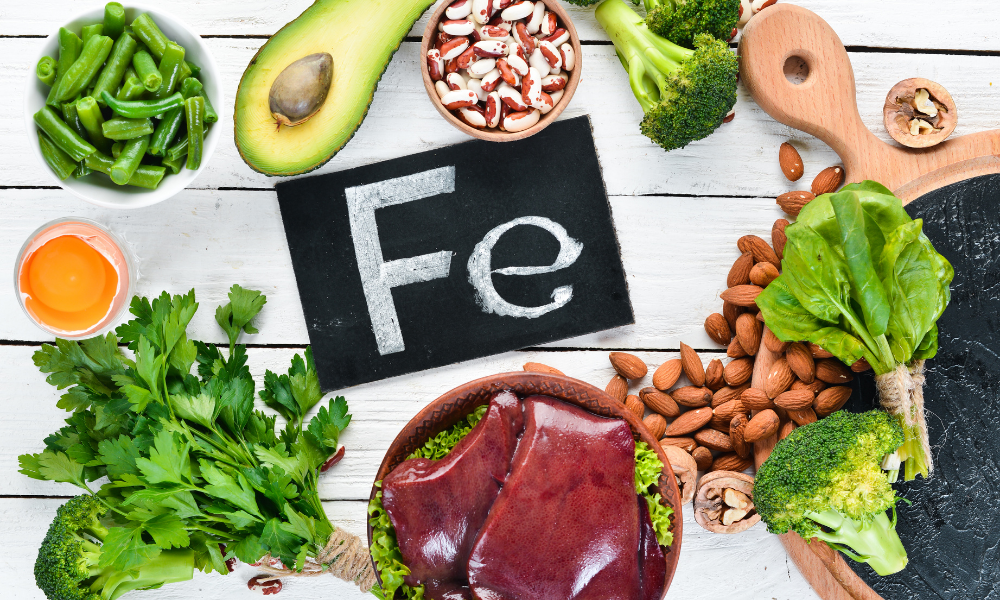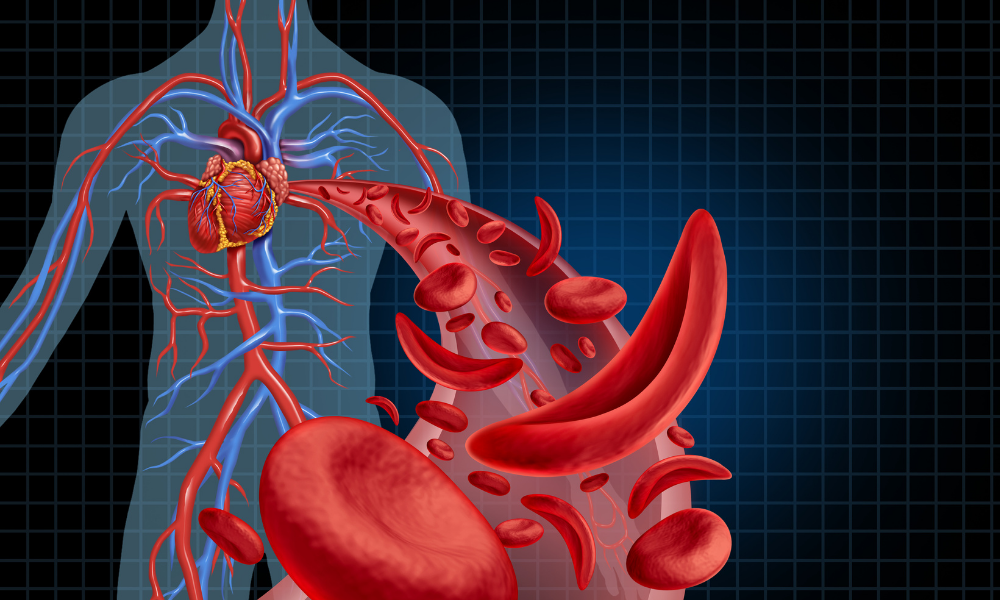Table of contents
General considerations about the symptoms of anemia

Millions of people around the world suffer from anemia, especially children. According to data from the World Health Organization (WHO), 40% of children under 5 years of age on the planet have anemia. In Brazil, this figure is also quite significant, since one in every 3 children suffer from this condition.
In short, anemia can be temporary or long-term and can range from mild to severe. Anemia is characterized by a reduction in the number of red blood cells or the amount of hemoglobin in red blood cells.
It reduces the amount of oxygen available to the body cells and causes symptoms such as fatigue, weakness, pale skin, rapid or irregular heartbeat, shortness of breath, among others. Reading below will shed more light on this disease and its causes and more.
Iron and anemia

Iron deficiency is the most common cause of anemia. Because iron is used to make hemoglobin, a lack of iron results in impaired red blood cell formation.
Iron deficiency anemia can be the result of insufficient iron intake and/or absorption, or significant blood loss. Excessive use of anti-inflammatory medications, e.g., aspirin or ibuprofen, especially in the elderly, can cause internal bleeding from irritation of the digestive tract. Learn more below.
What is anemia
Anemia occurs when there are a low number of red blood cells or a low amount of hemoglobin in red blood cells. Hemoglobin is a protein that helps transport oxygen throughout the body. In effect, red blood cells use iron to create hemoglobin.
Anemia can develop if your body does not have enough iron. It can also occur if your system does not produce enough red blood cells or if they die off faster than your body can produce them. Thus, anemia comes in many types and can have different causes as well as being a sign of another, more serious problem.
What is iron
Iron is an important component of hemoglobin, so if you don't have enough iron, your body can't produce enough healthy, oxygen-carrying red blood cells.
In this regard, iron deficiency anemia can be caused by blood loss due to intense periods or childbirth, severe injuries, surgery, and ulcers. It is also possible to develop iron deficiency simply by not eating enough.
However, some people may also eat enough iron but have difficulty absorbing it due to gastrointestinal disorders such as Crohn's disease.
Difference between iron deficiency and anemia
Iron deficiency is the lack of sufficient amount of this nutrient in the body. With iron deficiency the RBCs in the blood cannot carry oxygen from the lung to other parts of the body and thus our body would not function.
Iron helps the cell to transform glucose into energy, the lack of it causes fatigue. Besides this symptom, a feeling of tiredness and brittle nails may occur.
Some anemias are caused by low levels of iron in the body, but not all anemias are caused by iron deficiency. Sickle cell anemia, for example, is genetic in origin and is related to the shape of red blood cells.
Types of anemia and their risk factors

Anemia is classified into two categories, namely acquired anemia and hereditary anemia. In the first case, the person acquires it throughout life and in the second, the person is born with the disease due to heredity.
Some of the risk factors include altered genes, cancer development, immune diseases, kidney problems, diabetes, and hemophilia. In addition, the types of anemia include: iron deficiency anemia, sickle cell anemia, megaloblastic anemia, and thalassemia anemia. We will discuss each of these in detail below.
Anemia caused by lack of nutrients
Anemia is usually caused by a lack of some nutrients that are important in the production of red blood cells and a lack of these can cause the most common type of anemia. Incidentally, some of the most needed blood nutrients are folic acid, iron, and vitamin B12.
When there is less hemoglobin in the blood, it means that one or more essential nutrients are missing, and whatever the cause of the deficiency, the person is anemic. Thus, iron deficiency anemia and megaloblastic anemia are among the types of anemia caused by a lack of nutrients.
Iron deficiency anemia
One of the most common types of anemia, iron deficiency anemia is the lack of iron in the body. As we saw earlier, iron is responsible for the production of red blood cells and for enabling the transport of oxygen to various parts of the body.
Iron deficiency anemia can also be caused by some diseases that cause blood loss, such as bleeding from trauma and accidents, menorrhagia, and gastrointestinal bleeding. Therefore, iron replacement is used to treat iron deficiency anemia.
Megaloblastic anemia
Megaloblastic anemia is caused by a decrease in the number of hemoglobins that are large and immature. In addition, hemoglobins do not function properly, for example, when there is reduced DNA synthesis. At the same time, platelets and white blood cells are also low.
Megaloblastic anemia is caused by a deficiency of vitamin B12, which is important for the synthesis of hemoglobin and folic acid. In fact, these two substances contribute to the formation of DNA. Indeed, the introduction of B complex supplementation in the treatment helps to make up for the loss of vitamins that are responsible for DNA synthesis, stimulating the production of new cells.
Sickle cell anaemia
Sickle cell anemia is a genetically determined, inherited disease that causes the red blood cells to be deformed into sickle-shaped, sickle-shaped cells. As a result, the membranes of these cells are altered and can break apart easily, leading to anemia.
Sickle red blood cells, different from normal ones, are moon-shaped, not very flexible and cannot pass through the smaller blood vessels, clogging them in different organs of the body.
Sickle cell anemia is one of the most common types of sickle cell anemia because it is a hereditary disease that is passed from father to son. Its treatment can be done through a blood transfusion or, depending on the case, through a bone marrow transplant.
Thalassemia Anemia
Thalassemia anemia, also known as Mediterranean anemia, is caused by a genetic mutation that interferes with the production of hemoglobin, resulting in RBCs that are smaller and contain less of the oxygen-carrying protein.
Because it is also a hereditary anemia, it has a genetically characterized defect in one of the four protein chains that make up hemoglobin, two called alpha and two called beta. This problem decreases or prevents the manufacture of normal hemoglobin.
Treatment for this anemia can be through surgery to remove a piece of the spleen and also through a stem cell transplant.
Anaemias caused by autoimmune diseases
Autoimmune diseases are diseases in which the body produces antibodies that attack red blood cells. Therefore, hemolytic anemia is one of those diseases that causes RBCs to be destroyed prematurely without allowing the bone marrow to replace them.
In this case, the bone marrow is not able to speed up the production of RBCs in sufficient quantity to replace those that are being lost; thus, symptoms of hemolytic anemia include low mood, purple spots on the skin, pallor, and dry eyes and skin.
Anemias caused by chronic diseases
When anemia is caused through the interference of chronic diseases, it means that the body may notice inflammation and therefore slows down the production of RBCs, which also decreases the survival of cells. As a result, anemia caused by chronic diseases can cause the shortage of RBCs.
Finally, some autoimmune diseases that can lead to anemia include lupus, rheumatoid arthritis, cancer, Crohn's disease, osteomyelitis, AIDS, and hepatitis B or C.
Anemia caused by bone marrow disease
Aplastic anemia is caused when the bone marrow decreases its production of red blood cells and other blood elements. This anemia may be acquired during a person's lifetime or it may be accompanied by other illnesses, but it is rarely the case.
The causes of aplastic anemia are autoimmune diseases, direct contact with chemicals and toxins, and infections. This is one of the most serious anemias and without proper treatment the patient runs a high risk of dying quickly.
Symptoms, how to confirm and how to fight anemia

Some of the most common symptoms of anemia are tiredness and fatigue, but some people may also have other symptoms or be asymptomatic. Also, when anemia is caused by a lack of certain nutrients in the blood, it can be related to poor diet.
Read on and see what the symptoms are, how to fight it, what to do to confirm the diagnosis of anemia, and more.
The symptoms of anemia
The anemia develops from the presence of some of the symptoms such as excess blood loss or bleeding, decreased production of RBCs and destruction of RBCs.
Mild anemia can be asymptomatic or have less aggressive symptoms, while severe anemia has more evident symptoms and can lead to some risks.
Indeed, the main signs and symptoms of anemia include lack of appetite, pale skin, indisposition, learning deficit, tiredness, shortness of breath, fatigue, chest pain, cold feet and hands, bad mood and headaches.
How to confirm anemia
In order to confirm that you have anemia, you need to be aware of your symptoms and see a doctor. The doctor will then order tests that can confirm or rule out the disease. If the test is confirmed, treatment will begin. The most common test for anemia is a complete blood count (CBC).
How to fight anemia
When the anemia is megaloblastic, injecting the vitamin directly into the vein can make up for the lack of this nutrient. However, when the anemia is advanced and severe, a blood or bone marrow transfusion is necessary.
But, as the popular saying goes, "prevention is always the best medicine." Thus, in the case of acquired anemias, these diseases can be prevented by proper and healthy diet as well as monitoring done through blood tests. Therefore, it is necessary to confirm the disease and identify what type of anemia so that it can be properly treated.
What to eat in anemia
Foods with a high concentration of iron and vitamin C contribute to the treatment of anemia. Consumption of these, in addition to helping treat the disease can also prevent it.
Thus, it is essential to consume foods that contain iron, such as red meat, poultry, fish and dark green vegetables like spinach, to increase the amount of hemoglobin in the blood.
Vitamin C is found in acidic and citric fruits like pineapple, tangerine, orange, acerola and lemon. In short, they help the body absorb iron.
Complications of anemia and recommended treatments

Complications of anemia occur according to the type of the disease. In this regard, some can impair the functioning of the circulation, heart problems, malignant tumors, bone disease and neural complications.
Some treatments for anemia are done with medications to stimulate the production of hemoglobin; others are done with iron and vitamin replacement, either with supplements or through proper nutrition.
Therefore, the treatments applied in anemia may vary depending on the type of anemia that has been identified. Learn more below.
Complications of anemia
Anemia can lead to dangerous complications such as gastric cancer, which is detected through a stomach biopsy. Other complications of anemia include damaged nerves, neurological problems or memory loss, digestive problems, and especially heart problems.
An anemic person's heart pumps a larger amount of blood to replace the lack of oxygen in the blood, so that the heartbeat can become rapid and accelerated, causing arrhythmia or heart failure.
Treatment of anemia
Treatment for anemia is carried out as directed by your doctor; however, before any treatment is given, the type of anemia must be diagnosed. Only with the results of blood tests will your doctor be able to determine treatment, whether it be medication, supplements, a bone marrow transplant, or a blood transfusion.
In addition, each anemia has a different treatment. For example, in the case of hemolytic anemia, because it is very severe, it requires a surgical intervention where a part of the spleen is removed. In the case of anemia caused by lack of iron and vitamins, the treatment is done with their replacement.
Iron supplement against anemia
The most commonly used supplements in cases of anemia are those containing iron, vitamin B12, vitamin C, and folic acid. In fact, ferrous sulfate is one of the best known supplements to supply the absence of iron.
Folic acid and vitamin B12 are recommended supplements, especially in the case of pregnancy, where pregnant women need to replenish these nutrients in a larger amount for the baby to develop healthily.
Therefore, all these supplements will help both in the treatment and prevention of some anemias.
If you identify the symptoms of anemia, what should I do?

If you identify symptoms of anemia, you should have your doctor perform the necessary tests and treatment to match your type of anemia. It is important to know that many problems caused by anemia can be avoided when the disease is diagnosed early.
While it is often possible to treat anemia on your own by changing your diet, lifestyle, and the supplements you take, it is also a good idea to see a doctor if you suspect the onset of more severe and frequent symptoms, considering that it may be a side effect of other serious illnesses.

